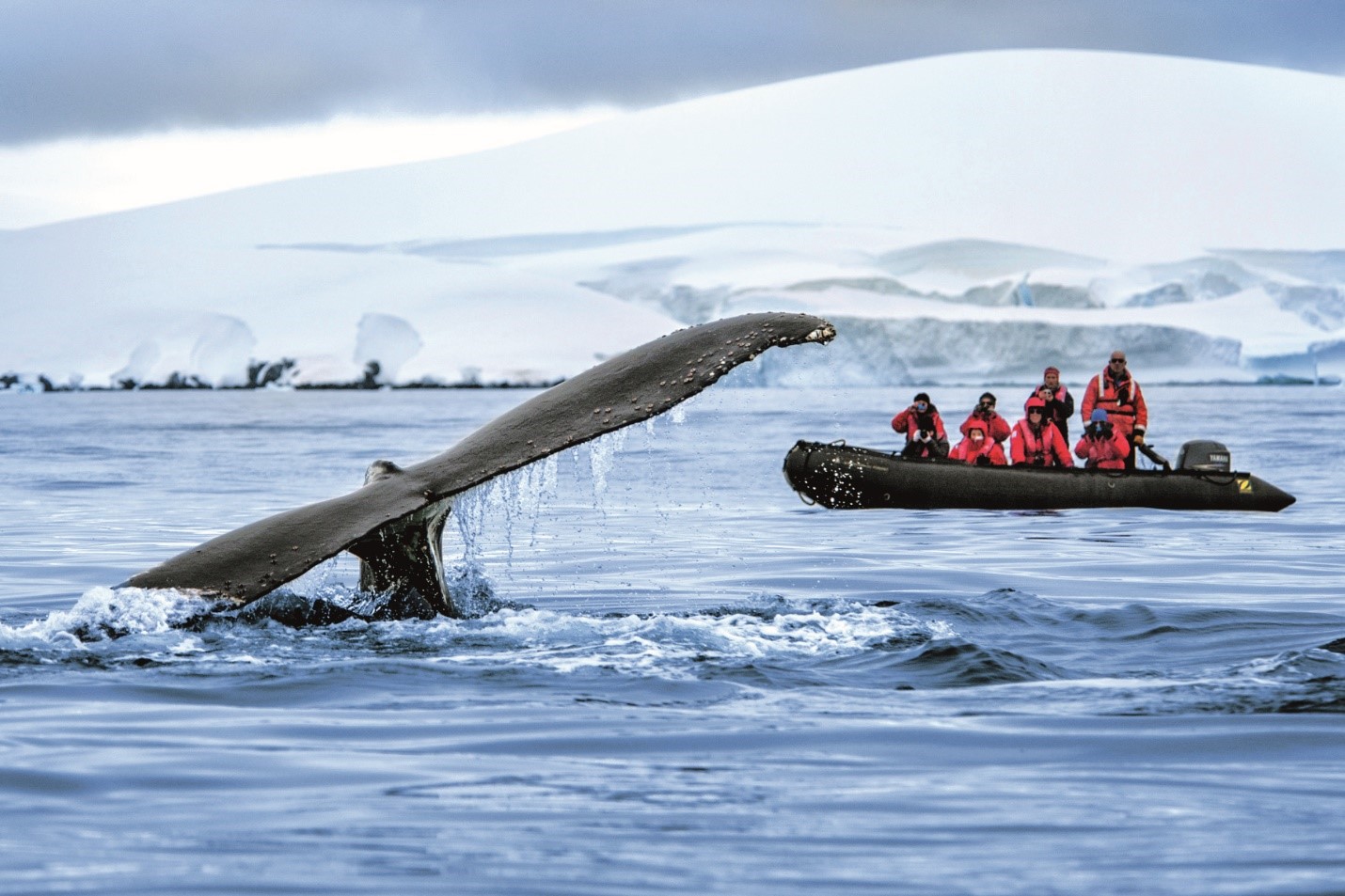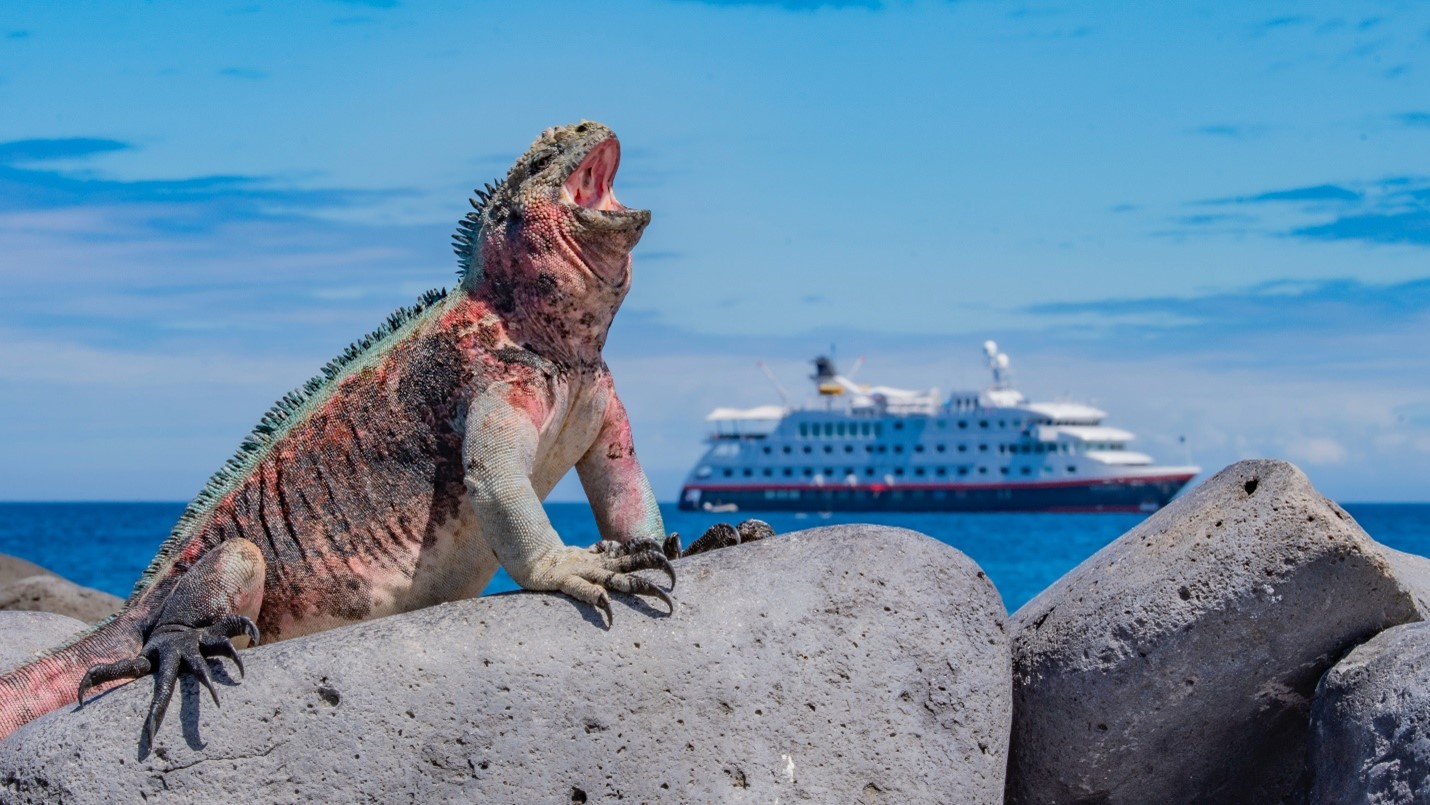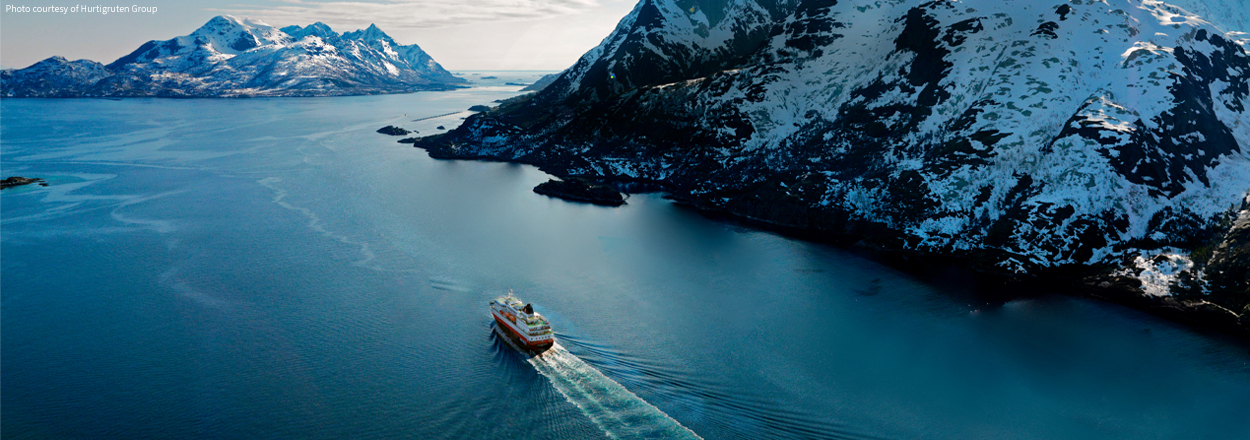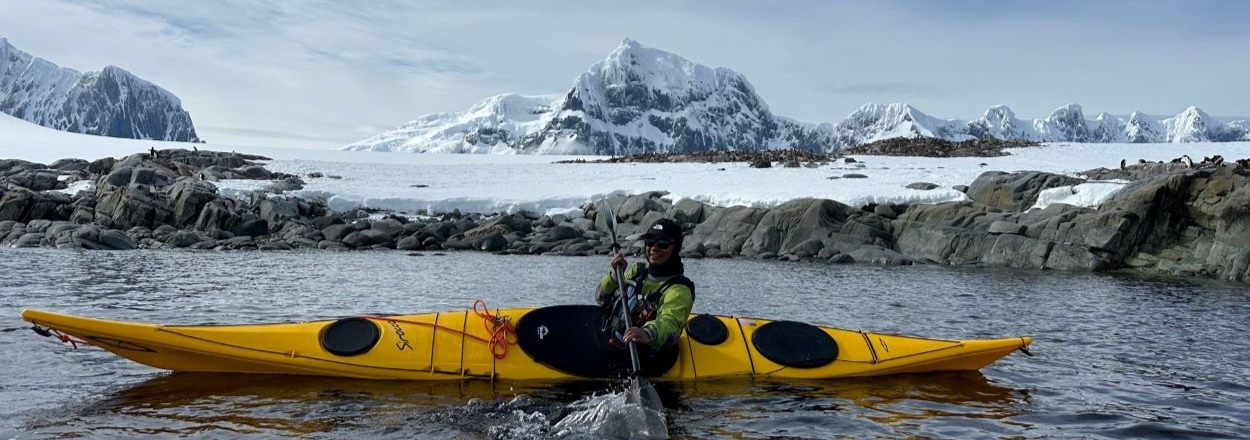Have you ever felt the need to get away? Not just on a road trip, or a quick weekend retreat. Something more, a longing to disappear to the ends of the earth, an unquenchable need for exploration. An adventure to a place far, far away.
There’s a word for that feeling: Fernweh. Literally translating to far-woe in German, the expression is sometimes used to describe that same longing for distant places. As for the cure to this wanderlust-induced affliction, expedition cruises just so happen to be the perfect antidote.
Often overlooked in lieu of traditional cruising, expedition cruises can be an intimidating product for travel advisors to get on board with. But they don’t have to be. Here’s what advisors need to know about the history of expedition cruises, what makes them special and how they can start selling them to their clients.
What Are Expedition Cruises?
The origins of modern expedition cruising are often credited to Lars-Eric Lindblad, a Swedish-American entrepreneur and explorer who pioneered his first tourist expedition to Antarctica in 1966. For a taste of what the inaugural voyage was like, interested parties can head to YouTube to watch the original footage of the M.S. Lindblad Explorer’s journey. The scene opens on a huddle of black and white penguins goofily hopping and sliding across sparkly sheets of ice. From the ship’s deck, several well-bundled cruise-goers look on, binoculars in hand. The excitement is contagious. It’s clear that the experience was something special, the first of its kind. And from the beginning, travelers were hooked.
The world of expedition cruising has evolved since then, but the mission of the crew aboard the vessels remains the same — to connect travelers to places previously only known to scientists and explorers.
What Sets Expedition Ships Apart?
Different from what might come to mind when travelers picture the modern cruise ship, expedition ships aren’t akin to floating cities fully equipped with waterslides and Go-Kart tracks. Instead, the boats are smaller and nimbler, carrying anywhere from 500 to as few as 12 passengers at a time. Expedition ships are designed to be functional, meaning travelers sailing on the smallest of vessels may need to forgo the luxurious bells and whistles associated with their larger counterparts.
However, what some expedition vessels lack in creature comforts they make up for in cutting-edge technology. Take for example X-BOW ships, watercraft specially designed to cleave waves, resulting in a quieter, more comfortable journey. Not only is this new look great news for travelers who go green at the gills on rocky waters, it also allows crews to navigate to remote places with added confidence and ease. In addition to innovative design, cruise suppliers like Hurtigruten and Ponant are leading the way on the sustainability front with the launch of the world’s first hybrid-powered cruise ship and increasingly environmentally friendly fleets respectively. And this is just the beginning as expedition cruise lines continue to work toward a more sustainable future in the spirit of the preservation of incredible places.
 Travelers look on from a Zodiac as a whale surfaces nearby, photo courtesy of Ponant.
Travelers look on from a Zodiac as a whale surfaces nearby, photo courtesy of Ponant.
What Makes Expedition Cruises Special?
Expedition cruises are designed to awaken the explorer that lives within us all. They provide unparalleled access to some of the world’s most hard-to-reach places, fostering unique memories and moments. How else can travelers experience the rush of observing rare wildlife from the comfort of the ship’s deck, the flutter in their stomachs as they break free from the main boat in an inflatable shuttle pod (aka Skiffs or Zodiacs) and the unmatched expertise of traveling with highly trained guides?
“I’m a lifetime hiker and camper; I love going places very few people ever visit, like a mountain meadow you can reach only by foot,” said Eric Jensen, independent travel agent for Pocket Map Travel. “That is what’s great about expedition cruising, small ships can go places that the big ships can’t reach. You can see things that few other travelers ever see.”
And seeing those places, the things so few people have seen before, is part of the appeal of expedition cruising. The experience is awestriking, adventure-quenching and, let’s be honest, total travel bragging rights.
The Destination Is the Star
Expedition cruises are for the adventurous and the curious. With this style of travel, the destination is the star, and travelers are presented with a variety of ways to become intimately familiar with it. Whether they snorkel amongst sea turtles and blue-footed boobies, kayak alongside majestic fjords, hike across the top of a glacier or take a bike ride on the shore, there’s something for everyone. And while small ship cruises offer adventures aplenty, there’s also an educational element to many expeditions. For example, instead of cocktails and a Broadway-worthy show, passengers might attend onboard lectures on marine life and local history. Off the boat, there’s a focus on connecting with locals through things like culinary experiences and visits to far-off archeological and historical sites.
With so much to do in so little time, travelers will appreciate the flexible nature of expedition cruising. “One of my favorite suppliers is UnCruise Adventures,” said Jensen. “They vary their daily itineraries based on the weather or the best wildlife-watching. And, instead of having to sign up for shore excursions weeks or months ahead of time, you sign up for tomorrow’s activities while mingling with fellow passengers and the crew at happy hour.”
 Travelers look on from a Zodiac as a whale surfaces nearby, photo courtesy of Ponant.
Travelers look on from a Zodiac as a whale surfaces nearby, photo courtesy of Ponant.
Getting Started With Expedition Cruises
Advisors who are looking to dip their toes into the expedition cruising waters might find that getting started is easier than they thought. Here are a few tips for overcoming common hurdles associated with booking this type of travel.
Finding Clients
According to the Cruise Lines International Association’s (CLIA) 2022 State of the Cruise Industry Outlook report, the average age of modern cruise tourists is 47.6 years. And while Baby Boomers and Gen X still dominate the scene, younger generations like millennials appear eager to take to the seas. Interestingly, some suppliers like Seabourn Cruise Line are taking notice of this trend and are focusing their marketing efforts on travelers ages 35 and up.
When it comes to how advisors can find potential clients, Jensen recommends looking to outdoorsy travelers. “Clients who enjoy national parks — which have been especially popular since the start of the pandemic — make perfect prospects for expedition cruises,” he said. “Those clients have a sense of exploration and adventure that’s well-suited for small ship cruising.” Additionally, Jensen noted that expeditions are an excellent way to celebrate life’s big moments. “A great target population for expedition cruises is folks who have reached an important milestone like a birthday, anniversary or recent retirement. Getting a little bit out of your comfort zone on a small ship adventure can be just the thing to mark the occasion.”
Not to mention, after years of lockdowns and travel restrictions, expeditions are hot, hot, hot. According to sources like Cruise Critic, trends show that more Americans are looking to check bucket list trips off their travel wish list in 2023, including expedition cruises.
Working With Suppliers
As interest in expedition cruises continues to grow, more and more suppliers are partnering with advisors to keep up with the demand. For example, popular small ship cruise lines like UnCruise Adventures, Quark Expeditions, Ponant, Lindblad Expeditions-National Geographic and Hurtigruten all work with advisors to help them easily book cruises for their clients. Additionally, some suppliers even offer certification programs and discounted FAM rates to help familiarize travel pros with their product line.
“I’d encourage advisors who are just getting started to pick two or three suppliers and learn about them and their top destinations,” said Jensen. “With a little bit of research and a sense of adventure, it’s easy to create a unique travel niche for your business.”
As for the payout, while it varies from supplier to supplier, many expedition cruise lines pay advisors for their hard work in the form of commissions, bonuses and rewards.
A Note About Insurance
As with any form of adventure travel, a certain level of risk is associated with expeditions. As such, many cruise operators insist that travelers present proof of insurance before boarding the ship, especially when it comes to remote regions like Antarctica and the Arctic.
Luckily for advisors, there are plenty of options to recommend to clients before they take to the seas, whether that be insurance supplied by a third-party company, an insurance partner working with the cruise operator or insurance plans available through the cruise operator itself.
Originally appeared in the Spring 2023 issue of The Compass magazine.






comments